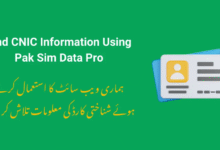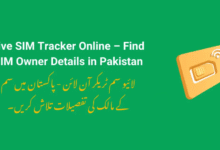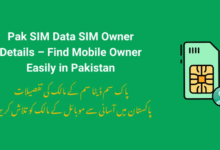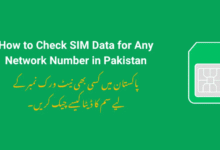Check Personal Data Using SIM Data Online
Introduction to Checking Personal Data Using SIM Data
In the modern digital age, verifying personal data quickly and accurately is more crucial than ever. One convenient and reliable way to check personal information is by using SIM data online. But what exactly is SIM data, and how does it relate to your personal identity? This article will guide you through everything you need to know about checking personal data using SIM data online, including how it works, the benefits, precautions, and step-by-step instructions.
SIM data refers to the unique information stored on your Subscriber Identity Module (SIM) card, which is essential for your mobile phone to connect to your telecom provider’s network. By accessing this data online, you can verify your identity, detect any discrepancies, and enhance your personal data security.
Understanding SIM Data and Its Role
SIM cards contain various data points crucial to mobile communication and user identification:
-
IMSI (International Mobile Subscriber Identity): A unique number identifying your SIM on the network.
-
ICCID (Integrated Circuit Card Identifier): The unique serial number of your SIM card.
-
MSISDN (Mobile Station International Subscriber Directory Number): Essentially, your phone number.
These components connect your SIM card directly to your personal identity, making SIM data a powerful tool for data verification. However, legal and security considerations must be taken into account, as unauthorized access to SIM data can lead to privacy breaches or identity theft.
Methods to Check Personal Data Using SIM Data Online
There are several methods to check personal data via SIM data online:
Checking Data Through Official Government Portals
Many countries have government-run portals that allow users to verify their SIM card registration details to ensure their data is correct. Examples include India’s DoT portal or Kenya’s NIC platform. The process usually requires entering your SIM number or phone number to retrieve linked personal information.
Advantages of these portals include reliability and data accuracy, while risks mostly involve ensuring you access the official sites only.
Using Telecom Service Provider Platforms
Most telecom companies offer online portals where users can log in and check their SIM registration details, personal data linked to the SIM, and usage history. Verification typically requires authentication via an OTP (One-Time Password) sent to the registered number.
Third-Party Apps and Online Services
Several third-party applications and websites claim to offer SIM data verification. While some provide useful services, many pose privacy risks, and users must exercise caution. Always verify the authenticity of such services before use.
Step-by-Step Guide to Check Personal Data Using SIM Data
Before checking your personal data, have your SIM card ready and know the SIM number or phone number associated with it. Follow these general steps:
-
Visit the official government or telecom provider’s portal.
-
Enter your SIM number (IMSI/ICCID) or registered phone number.
-
Complete any verification steps, such as OTP confirmation.
-
View the personal data linked to the SIM.
-
Verify the information and report discrepancies if any.
Understanding how to interpret the data is vital. The portal may show your name, address, and other identity markers associated with your SIM card.
Benefits of Checking Personal Data Using SIM Data Online
Checking your personal data via SIM data online offers numerous benefits:
-
Enhanced Security: Spotting unauthorized changes or cloning attempts.
-
Preventing Fraud: Early detection of SIM-based identity theft.
-
Convenience: Quick verification without visiting service centers.
-
Accuracy: Ensuring your records are up to date and correct.
Risks and Precautions When Using SIM Data Online
While checking SIM data online is beneficial, there are risks:
-
Scams and Fraudulent Sites: Fake websites may steal your data.
-
Privacy Concerns: Sharing sensitive data on unverified platforms can lead to breaches.
-
Legal Restrictions: Accessing others’ SIM data without permission may be illegal.
Always use official sources and secure connections to minimize risks.
Common Problems and Troubleshooting
If you cannot find your data or receive errors:
-
Double-check SIM and phone number entries.
-
Try different official portals or service providers.
-
Contact customer support for help resolving issues.
Frequently Asked Questions (FAQs)
Q1: Can I check someone else’s personal data using their SIM?
No. Accessing someone else’s SIM data without their consent is illegal and unethical.
Q2: Is it safe to use third-party websites for SIM data verification?
Generally, no. Only trust official government or telecom provider portals.
Q3: How often should I verify my SIM data?
It is advisable to check your data periodically, especially if you suspect fraud.
Q4: What personal data can I access using SIM data?
Typically, your registered name, address, and contact details linked to the SIM.
Q5: What should I do if my personal data linked to the SIM is incorrect?
Report it immediately to your telecom provider or relevant government authority.
Q6: How can I report SIM-related fraud?
Contact your telecom provider and law enforcement agencies to report fraud cases.
Legal and Privacy Implications of SIM Data Access
Accessing SIM data involves sensitive personal information protected by data privacy laws worldwide. User consent is mandatory, and unauthorized access can lead to penalties. Always ensure transparency and legal compliance when handling SIM data.
Future of Personal Data Verification Using SIM Data
Emerging technologies like blockchain and AI promise more secure and efficient SIM data verification. Integration with digital ID systems may soon streamline identity verification processes globally, making personal data checks faster and safer.
Conclusion
Checking personal data using SIM data online is a powerful tool to safeguard your identity and maintain data accuracy. By leveraging official portals and trusted telecom platforms, users can verify their personal details conveniently while staying alert to privacy and security risks. Embrace this technology responsibly to enhance your personal data security in the digital era.






